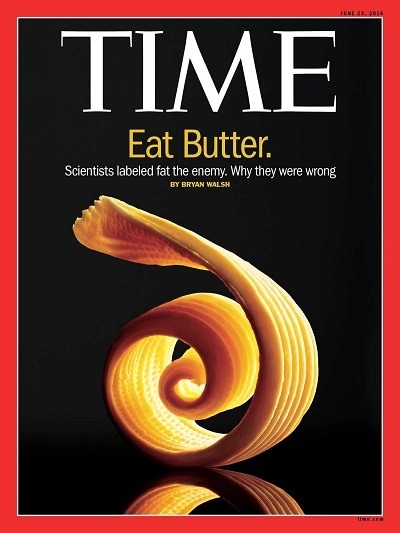First of all, let's call it Full-Fat Dairy...There’s no hiding that at Kriemhild we’re focused on fat. It’s hard to find a more nutritionally disputed food than full-fat dairy, and we’re at the extreme end of the opinion spectrum by making a butter with higher-than-average butterfat percentage (on purpose, no less!), and now by making crème fraîche, which has higher fat content than either yogurt or sour cream.
It’s not uncommon for us to be playfully scolded by customers for selling such good-tasting full-fat dairy products; a “tempting dietary sin,” they say. And we understand, conventional dietary advice has been to avoid saturated fat to reduce the risk of heart disease and maintain an overall healthy diet. However, over the past 7 years there’s been growing scientific evidence to challenge the findings that inspired the original USDA Food Pyramid in 1992 (1,2). What we’re really trying to say it this: we’re not out to get you, and neither is fat. We truly believe we are providing you with quality dairy that has authentic nutritional benefits. We agree with the scientific proof that saturated fats in our dairy products are not inherently bad, and are actually an important part of a healthy diet. In response to the growing scientific consensus pardoning saturated fats, Americans are increasingly switching to full-fat foods from low-fat options. A report published by the Credit Suisse Research Institute shows that butter and whole milk sales are rising. In 2014, butter sales rose 14% and in the first half of 2015 whole milk sale increase 11% while sales of skim milk dropped 14% (3). Being that fats, particularly saturated fats, have been the scapegoats of the nutritional world for decades, their vital roles in our bodies have been greatly unappreciated and misunderstood:
Of the three macronutrients —Protein, Carbohydrates and Fat— Fat is the most efficiently absorbed by our bodies for our energy needs. It’s that last little tidbit of information that inspired our 30 days of crème fraîche for breakfast challenge. Who hasn’t suffered through a low-fat breakfast only to be hungry an hour later? Fats signal satiety to our brains and slow down nutrient absorption so you eat less and feel full longer. Adding crème fraîche is one way to make an interesting breakfast that carries you over until lunch. Our fat advocacy is born from our advocacy of food from grass-fed animals. It’s, in truth, the fat of these foods that carry the benefits of the animals’ grass-fed diets. The fat profile of milk and other dairy products depends on what the cows eat. Grass-fed dairy contain more omega-3 fatty acids. Milk from cows with grass-based diets contains between 2.5 and 5 times the levels of omega-3 of the milk of grain-fed cows and present a better omega-6 to omega-3 ratio. Grass-fed milk can contain 1.5 to 2.5 times higher levels of conjugated linoleum acid (CLA), which helps reduce insulin sensitivity and lessen symptoms of inflammatory disorders (4). Omega-3 isn’t just a salmon thing (although salmon and crème fraîche go great together, not going to lie). So, if you’ve ever wondered why we shamelessly announce the full-fat content of our dairy, this is why. We’re convinced that full fat deserves a chance. Are you? Check out Today's recipe for Day 7 of the 30-Days of Crème Fraîche for Breakfast challenge. Cited Sources:
2 Comments
9/2/2021 11:33:34 pm
Hi. Thank you for sharing this very informative and useful article. Btw. I wanna share my experience about Genuine Haarlem Oil for Human since when I was started to using it for my health problems. Their products are very helpful both human and animals good for immune system booster.
Reply
Leave a Reply. |
As the Butter Churns
Author: Ellen Fagan and Victoria PeilaCategories
All
Archives
November 2019
|
Where our HEart is
|
FOLLOW US |
what our customers are saying"Thank you! Even though I'm 5 hours away...I can't live without you. Got my shipment today.
#kriemhildbutterlove" -- Jennifer in Mystic, Connecticut |
Copyright 2020 © Kriemhild Dairy Farms, LLC



 RSS Feed
RSS Feed